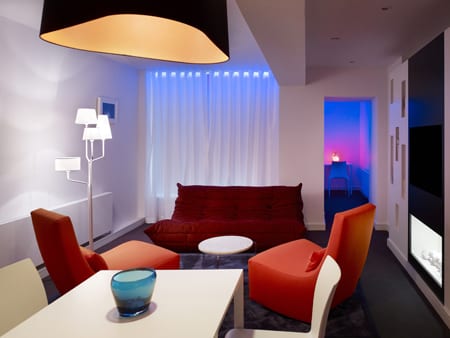 Gulla Jonsdottir
Gulla Jonsdottir
Principal
G+ Gulla Jonsdottir Design
Los Angeles
Gulla Jonsdottir has a knack for creating seductive spaces that encourage and entice people to linger. From Double Seven and Lilium in New York to Red O in Los Angeles, it’s her masterful mix of styling and attention to detail that makes each space feel like they were designed from the heart. And the truth is in the pudding: clients such as Thompson, Gerber Group, SBE, and Innovative Dining Group keep coming back for more from the Icelandic, Richard Meier-trained architect. Currently she is working on two Kimpton projects, the Hotel La Jolla and a rooftop bar and lounge for the Hotel Monaco Philadelphia; two buildings in Beirut housing multiple restaurants, a dinner theater, roof garden, and beach club; Hyde Miami; and Centerpoint, a ground-up restaurant in West Hollywood. Here she discusses a brave decision that forged her career, how room service in Italy confirmed her love of hospitality, and her ideal meal with Hemingway.
Did you always know you wanted to be a designer?
I think so…come to think of it, my memories of sitting with my grandfather drawing day in and out every day was some of the happiest memories of my childhood. My grandfather was an artist, so I guess he inspired me in many ways.
What are some of your first memories of design?
Walking through Florence and admiring all the amazing architecture and art that fills the city with such beauty that you forget to eat, read, write, or do anything else but be immersed in this beauty.
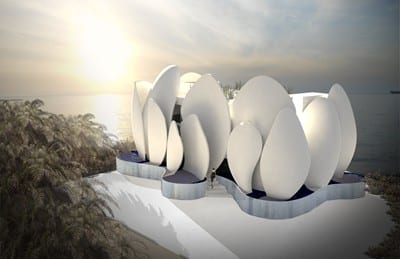
Mhanna, a two-story restaurant, banquet room, and roof-garden lounge in Beirut.
How did you end up where you are today?
I grew up in Iceland, and after college there, where I majored in mathematics and biology, I moved to Los Angeles where I studied at SCI-ARC (Southern California Institute of Architecture). After graduation, I was allowed one year of working visa in the U.S., so I decided to be very brave and take advantage of this opportunity and applied for only two jobs with the most famous architects in America: Richard Meier and Frank Gehry. I received an offer from Meier’s office prior to Gehry’s and ended up staying there and working on the Getty Center for four years. So opposite my original plan of returning back to Iceland after school, I’ve stayed in LA ever since graduation. I’ve worked for Walt Disney Imagineering as a set designer on a large project in Tokyo called Tokyo Disney Seas and also was the vice president and principal designer for Dodd Mitchell Design for several years, before launching my own design firm late in 2009.
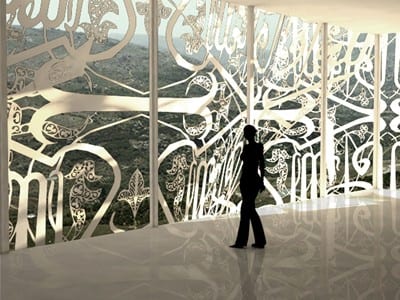
An interior rendering of Mhanna, where Arabic calligraphy is inscribed into the exterior’s white, petal-shaped concrete panels.
Do you have a greatest lesson learned?
I should have learned some business with the architecture lessons. Owning my own company has been a huge lesson in not only staying creative, but also how to keep the business profitable or at least being able to pay payroll.
Why did you start G+ Design?
I felt it was time. It was a thought like now or never. It was in a middle of a recession in 2009, but that can be as good a time as any for beginners I think. So I took a huge jump and haven’t looked back since.
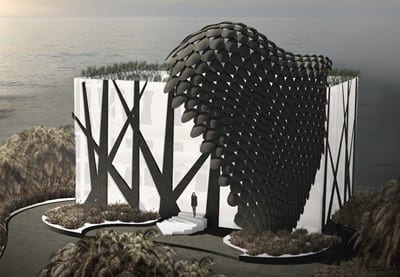
A rendering of the exterior of SupperClub, a restaurant, dinner theater, and beach club in Beirut.
Tell us about your corporate culture/design process.
It’s all based on creating beautiful spaces that make people happy. I have a very open loft-like office space. The beauty is in the details and the feeling of each space.
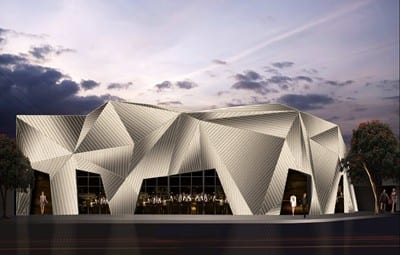
Centerpoint, a new restaurant and lounge in West Hollywood.
Why hospitality? Why restaurants?
Well, maybe it goes back to when I was twelve and staying in Florence with my mother. I absolutely loved staying in hotels and ordering room service-so be careful what you wish for I guess. But I enjoy hospitality and the home away from home it gives people both in hotels, resorts on the beach, restaurants, and spas. But I’m also very interested in large public projects such as museums as I’m a huge fan of art.
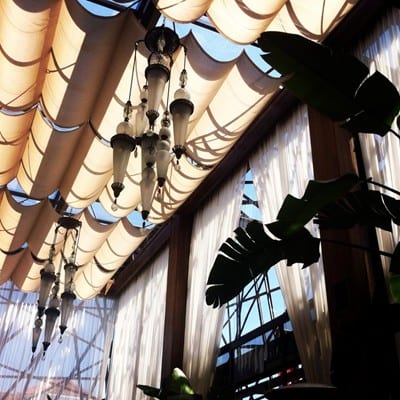
The interior atrium space of Red O in Los Angeles.
What are some of the challenges of the industry today?
Budget is one aspect. The price of materials has gone up and trying to be environmentally friendly without sacrificing the look and feel of the project and getting the client to spend a bit more for local eco friendly materials [has become a challenge].
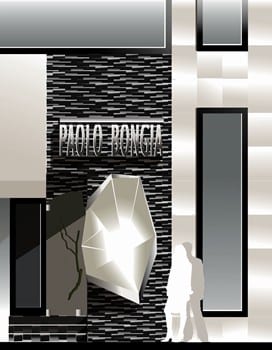
A rendering of Paola Bongia jewelry store on Rodeo Drive.
What’s a recent project that was most challenging and why?
Grauman’s Chinese Theater renovation. Not only is it a high profile project and a historic building, but people and neighbors feel very protective about this building which in a sense is good, but the building is a bit run down and all I want to do is transform it back to what it used to be in the 1920s when glamour was ruling Hollywood. But even this takes time and a few hurdles to cross.
What’s one project that you are most proud of and why?
I am passionate about all my projects but I feel like I still have to create the one project that I will be most proud of. Of the many that are close to my heart are Red O and Palmilla restaurants [both in Los Angeles] perhaps because I get to relive some days spent in Mexico when I worked on the design of Cabo Azul in Los Cabos for my previous design company. I still go there at least once a year for vacation.
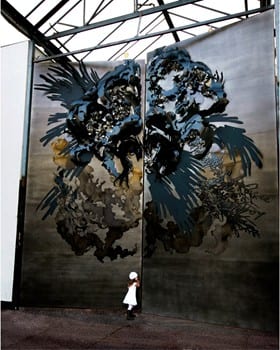
The 25-foot-tall steel entry doors of the Roxbury nightclub in Hollywood.
Talk to us about your recent foray into products. Why was that a natural step?
I’ve been designing furniture for years specific to each project as I see fit, so I thought it might be interesting to explore this further with a new furniture line. Right now I have a couple of collections-from dining tables and sofas to lighting-in the making.
What would be your dream project?
A skyscraper and a large museum

A rendering of the lobby of the Hotel La Jolla, California.
What’s the key to a successful collaboration between designer and client?
It’s a bit of give and take, understanding and respecting the client’s program, function, and budget, and good communication throughout the process.
What’s the most important thing to remember when designing a restaurant?
A few things: the flow of the space so it functions well for the staff, as well as being visually pleasant for the patrons, good ambient lighting, warmth, and comfort.
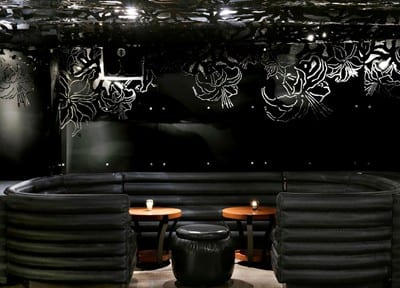
Booth seating at Lilium, the renovated lounge at the W Union Square.
What’s your favorite hotel and restaurant for design (that you didn’t design) and why?
All of the Aman hotels in Bali designed by my friends Ed Tuttle and Pin Tan from Paris. The attention to detail is immaculate as are the grand public spaces, the comfortable zen guestrooms, and the framing of the beautiful vistas.
One of my favorite restaurants is the restaurant at the One & Only Palmilla in Los Cabos, Mexico, mainly because of the five private booths for two that are situated on the edge of a cliff overlooking lit ocean waves that come crashing in while the candlelight at your table doesn’t flicker.
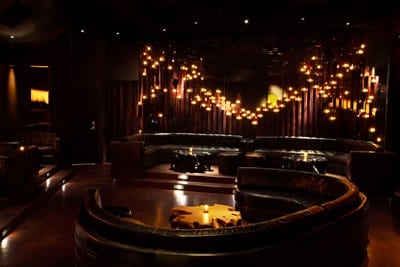
The seductive interior of Double Seven nightspot in New York.
Photo by Erez Sabag
Motto to live by…
To be happy and follow your heart
If you weren’t a designer, what would you be?
An artist-maybe a painter or a sculptor or a concert pianist
When you are not in the office we can find you…
At the beach
If you could have supper with anyone living or dead, who would it be?
Not to disrespect to Picasso, Gandhi, or Mother Theresa, but I would love to have dinner with Hemingway or someone as smart and full of life as he was.
Describe that meal, the wine, and the person you’re eating with.
The meal takes place in Positano in a gorgeous restaurant overlooking the town and the ocean. We have some burrata cheese for appetizers, a nice branzino for the main course, and a lovely bottle of Barolo. The person (Hemingway) is a handsome gentleman with a great sense of humor.
Gulla Jonsdottir photo by Erez Sabag

